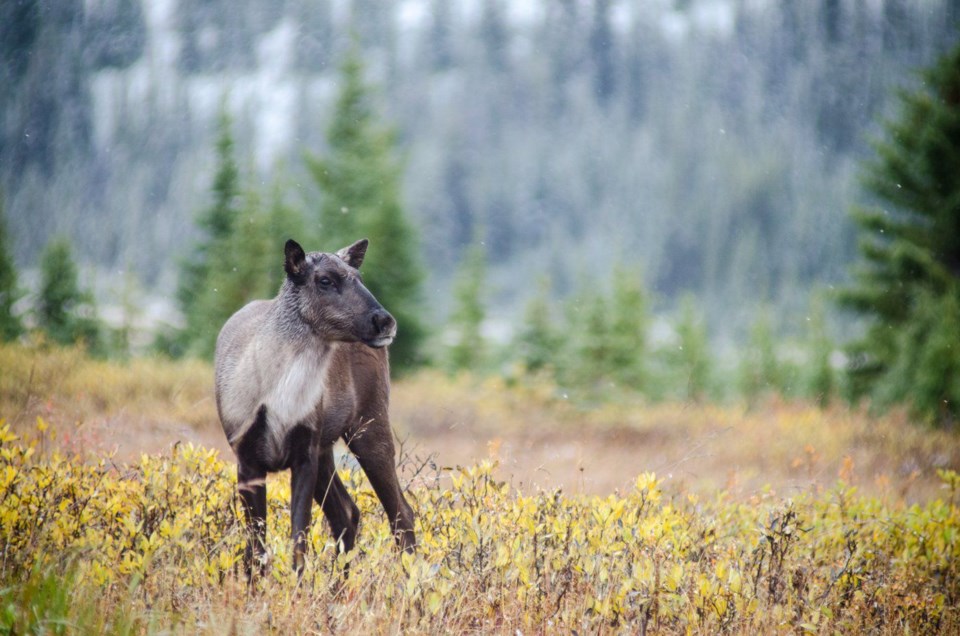Of the many major environmental issues that headlined news stories during 2023, it’s easy for Kecia Kerr to choose the biggest: wildfires.
“In addition to having huge impacts on communities and human populations, they of course have had big impacts on wildlife and habitat for wildlife as well,” said the executive director at the Canadian Parks and Wilderness Society (CPAWS).
CPAWS is a national charity dedicated to the protection of public land, freshwater and ocean areas. Its analysts reviewed the wildfires that afflicted Wood Buffalo National Park last year. Approximately 505,000 ha of the total of the 44,741 sq km park’s area was burned.
“The amount burned is actually probably bigger than these numbers at this point,” Kerr said.
She added that three of Alberta’s wildland provincial parks were also heavily affected in the 20-to-30 per cent range, and there were four provincial recreation areas that were fully impacted by the fires.
“We're not sure if that means that there's nothing left there anymore, but the footprint of them was completely covered by these fires.”
A total of 1,092 wildfires burned a record 2.2-million hectares of the province, according to the Alberta government, a figure that doesn’t include national parks.
Beyond the blazes, CPAWS kept a close eye on caribou as a major conservation issue. The caribou ranges in Alberta are really heavily impacted by industrial disturbance, especially from seismic impacts from mining.
Kerr said the province has been working towards modeling and developing sub-regional caribou range plans to determine if Alberta can get caribou ranges to a greatly reduced level of disturbance that will give them a better chance of being able to survive and hopefully expand their populations within 100 years.
“But they're not including fire in those in the models,” Kerr said.
“That's a concern of ours. The caribou ranges … they've all been impacted at least somewhat by the fires this year.”
More than 20 per cent of the Caribou Mountains was burned in 2023.
“I think as we as we move forward and we continue to feel these impacts of climate change, we're going to have to really get into that overall management of landscapes. These fires are going to, in some cases, wipe out any of those positive changes that we try to make. We're going to have to be making big changes in order to have some landscape out there available for wildlife,” Kerr said.
“It’s a big one. We don't have answers for that yet at this point. It's something that all of us are, or at least also land managers are going to have to be really thinking about.”
The Kearl Oil Sands Project was also huge on CPAWS’ list of concerns. The Imperial Oil mine near Fort McMurray experienced a number of major environmental faults.
In March 2023, Environment and Climate Change Canada directed Imperial Oil to contain tailings pond seepage that been ruled harmful to wildlife. The spill was originally detected as discoloured water in May 2022, but the required notification had not been given to federal regulators at the time.
It was determined to be tailings seepage, but no further updates were provided to area First Nations until February 2023. At the same time, it was disclosed to the public and federal and provincial environment ministers along with news of a second release of 5.3 million litres of tailings.
The government of the Northwest Territories publicly called it a violation of its agreement with Alberta to receive prompt reports on emerging threats to their shared watershed. Federal Environment Minister Steven Guilbeault took the events to repeat his call for a stronger federal presence on matters of environmental monitoring and communications in the oilsands.
The events also prompted the Information and Privacy Commissioner’s office to launch an investigation into the Alberta Energy Regulator.
“It's just a signal of this huge liability that we have on the landscape,” Kerr said, referring to the tailings ponds.“The province and the federal government are trying to come up with regulations on how they're going to deal with this huge liability of all of this liquid waste, and what they're going to do with it. What they're trying to figure out is if they can put it back into the Athabasca River.
“We obviously won't be supporting that if there's not a demonstration that they can be doing that in a way that would be safe for downstream communities and nature. At this point, there's no evidence for that.”




